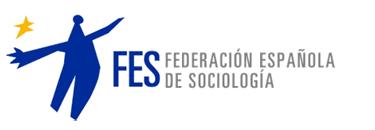El rol de la mujer en las disciplinas STEM. Un análisis multimodal de vídeos de proyectos de micromecenazgo para la competición científica iGEM.
DOI:
https://doi.org/10.24197/st.2.2022.228-251Palabras clave:
mujeres en STEM; videos de proyectos científicos de micromecenazgo; análisis multimodal; sesgo de género; textos digitales.Resumen
La brecha de género en ciencia, tecnología, ingeniería y matemáticas (STEM, por sus siglas en inglés) es un asunto de creciente preocupación social: aunque la presencia femenina en estas disciplinas ha crecido durante las últimas décadas, los hombres siguen superando en número a las mujeres (Corbett & Hill, 2015). Se ha demostrado que esto se debe, en parte, a la falta de visibilidad que ha tenido el trabajo de las mujeres científicas a lo largo de la historia, lo cual ha generado creencias y estereotipos inconscientes sobre el género y las carreras profesionales, y por tanto, el desinterés por la ciencia por parte de las mujeres (Nimmesgern, 2016). Investigaciones anteriores han demostrado que estos estereotipos se refuerzan a través de programas de televisión en los que se representan personajes femeninos ficticios en escenarios STEM (Steinke, 2017; Davis & Coleman, 2018), y el presente estudio tiene como objetivo explorar la representación de científicas y científicos reales en Internet. Aplicando un análisis multimodal desde una perspectiva semiótica social, examino cómo se representan las identidades de género en ocho vídeos de proyectos de crowdfunding de ciencia creados por estudiantes de universidad para un concurso científico internacional, el International Genetically Engineered Machine (iGEM). Apoyándome en el enfoque de género Swalesiano de move-analysis para el contenido verbal (Swales, 1990, 2004), y en el modelo de Gramática Visual (VG) de Kress y van Leeuwen (2006) para el contenido visual, el análisis pretende identificar significados y propósitos ideológicos sobre los roles de género dentro de un contexto de investigación científica. Los resultados son compatibles con estudios anteriores que confirman que las mujeres están infrarrepresentadas en STEM, lo que pone de manifiesto las ideologías que conducen a reforzar el sesgo de género en puestos de trabajo científicos.
Descargas
Descargas
Publicado
Número
Sección
Licencia
Derechos de autor 2022 Ana Cristina Vivas- Peraza

Esta obra está bajo una licencia internacional Creative Commons Atribución-NoComercial 4.0.
Todos los trabajos publicados en la revista Sociología y Tecnociencia se distribuyen bajo una Licencia Creative Commons Atribución 4.0 Internacional (CC BY 4.0).
Los autores continúan como propietarios de sus trabajos, y pueden volver a publicar sus artículos en otro medio sin tener que solicitar autorización, siempre y cuando indiquen que el trabajo fue publicado originariamente en la revista Sociología y Tecnociencia.


